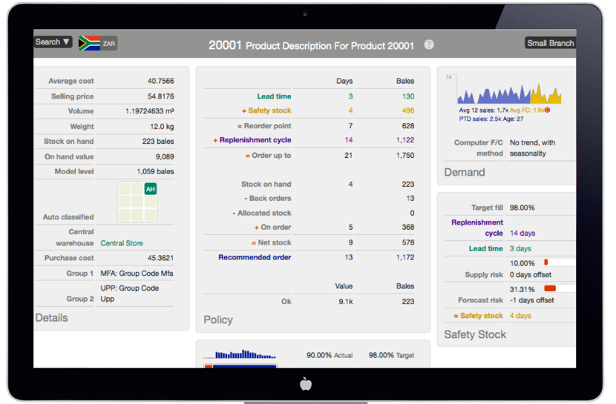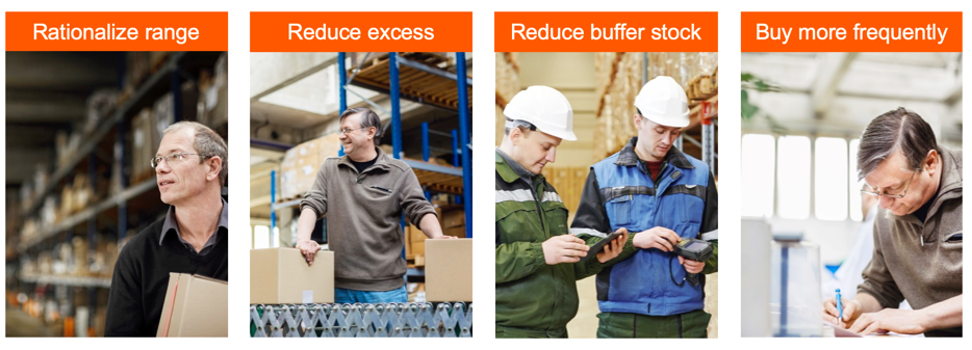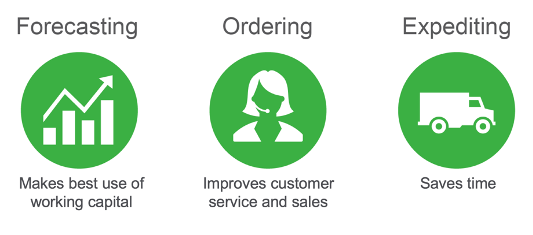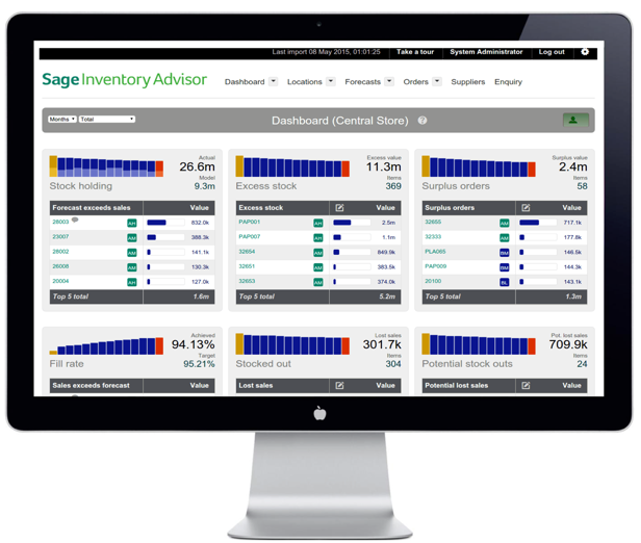
There are many pitfalls that many small to medium sized businesses make when managing inventory. Learn how Sage Inventory Advisor helps to reduce excess inventory by 10% to 15%, free up 15 to 20% of capital invested in stock, and improve fill rates up to 10%.
Sage offers better, easy, intelligent software options to reduce stock outs and excess inventory, options that were not available to small and medium sized businesses until recently. Smaller companies can now improve their profitability by using software that optimizes their inventory levels. It’s worth your time to change the way you manage your inventory.
Register for an upcoming webinar to learn more.

When people look at how to reduce stock-outs and excess inventory, many use some type of spreadsheet or manual system, or perhaps software that has been customized to help with inventory. This is a common approach, but we find it’s actually costing businesses significant time and money. We have seen this over and over again. What makes using your own developed method a bigger problem than you may realize is that inventory is one of the largest business expenses for a distribution, retail, or manufacturing company, if not the top expense.
That means small oversights add up in costs. You know your business needs to buy the right stock at the right time. What many don’t realize is the degree to which you are not buying the right inventory and how much that is costing you. Certain stock may get attention, but many do not.
Forward-thinking companies invest in technology to help improve efficiency, grow sales, and improve profits. This gives them a competitive edge. To optimize your inventory, using a manual or an in-house customized system falls short of the great results you could achieve. Relying on just your inventory management module isn’t enough.
An inventory control module does a lot, but your financial accounting solution does not optimize inventory. Here’s what it does do:
In other words, it tracks inventory transactions. But it really doesn’t identify and recommend what would be your best purchase decisions and when.
How most businesses manage their inventory today falls short with too many stock-outs, too much spent on stock, and many are spending too much time trying to figure it all out in spreadsheets or history.
Companies often focus on reducing or minimizing inventory costs to keep the company financially healthy. To reduce inventory costs, there are really only four methods you can use.

As an inventory purchaser, it’s always helpful to remember these four choices. But if you know your choices, why is it that you still experience excess inventory and stock outs? Because it’s hard to forecast.
Without an inventory optimization solution, it’s easy to forecast too low. If you buy too low, you will lose sales because you’ll experience stock outs. A low forecast can be due to pressure from your finance team to limit the working capital invested in inventory. So two things could happen:
On the flip slide, without an inventory optimization solution, it’s also easy to forecast too high. Then you are left with excess, and older stock Three things may occur in this case:
So getting the right inventory balance is hard without visibility into each SKU you have. Without the right visibility, an inventory planner/purchaser has a really tough job.
It’s hard to sell with too little of some stock and grow the business with too much of the wrong stock. Without an automated, organized way to see across your inventory, it’s just too complex. You’ll continue to react. And most companies often believe they can sell more products to get out of a dilemma, or believe that availability will improve by just working harder and longer.
When you are in reaction mode, you:
Imagine how the business would change if you could order the right stock. A solution that specializes in inventory optimization does this for you. When inventory levels are optimized, everyone benefits across the company.

Improvements are possible with Sage Inventory Advisor because it helps you buy the right stock at the right place and at the right time. This solution was developed by a team with deep and long-term expertise in inventory optimization.

At a summary level, it helps you forecast, order, and expedite your inventory, giving you what you need for any of your inventory decisions. Sage Inventory Advisor is designed to really answer two key questions
For example, if you want to see where your forecast is projected to exceed your sales, you can drill down to get into the details and decide what to do. Or you can look at your excess items and make a decision such as reduce your next order, or ship the items to another location. There are many status items to help you see at a glance what also needs your attention, all shown using a different way to view the health of your inventory. You can see what needs to be ordered and why that recommendation is being made. You can also see how you can top off on containers or on minimum quantities for shipping, or how you can hit the next level order discount.
Sage Inventory Advisor works with Sage 300, takes less than a day to integrate, is secure, is easy to understand, and is affordable. We are confident that this solution is going to save you money. We have seen it over and over again with our clients.
If you would like to learn more, register for an upcoming webinar to learn more. We would love to chat with you and discuss your specific business challenges to see if this optimization solution is a good fit for you. Contact us at Equation Technologies.
Equation Technologies
United States: 533 2nd Street Encinitas, CA 92024
Canada: #301 - 220 Brew Street Port Moody, BC V3H 0H6
Phone: 866.436.3530 • E-mail: info@equationtech.us
Equation Technologies ©2016